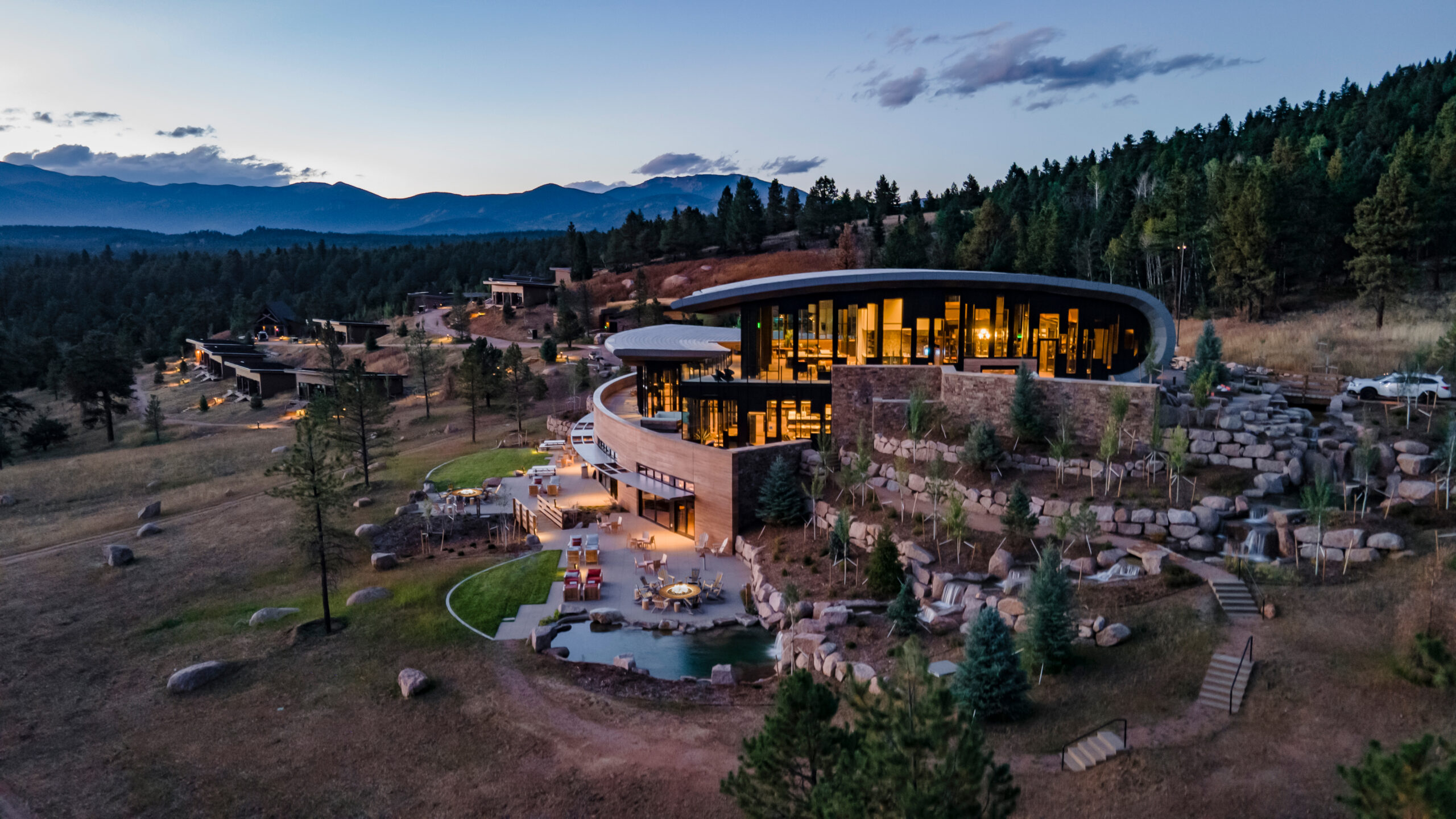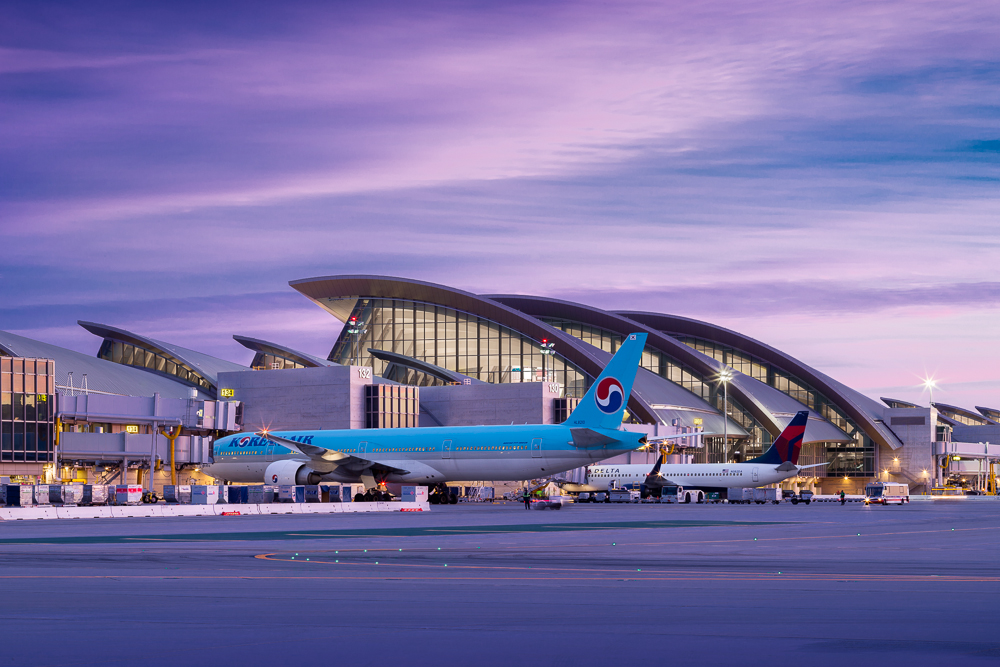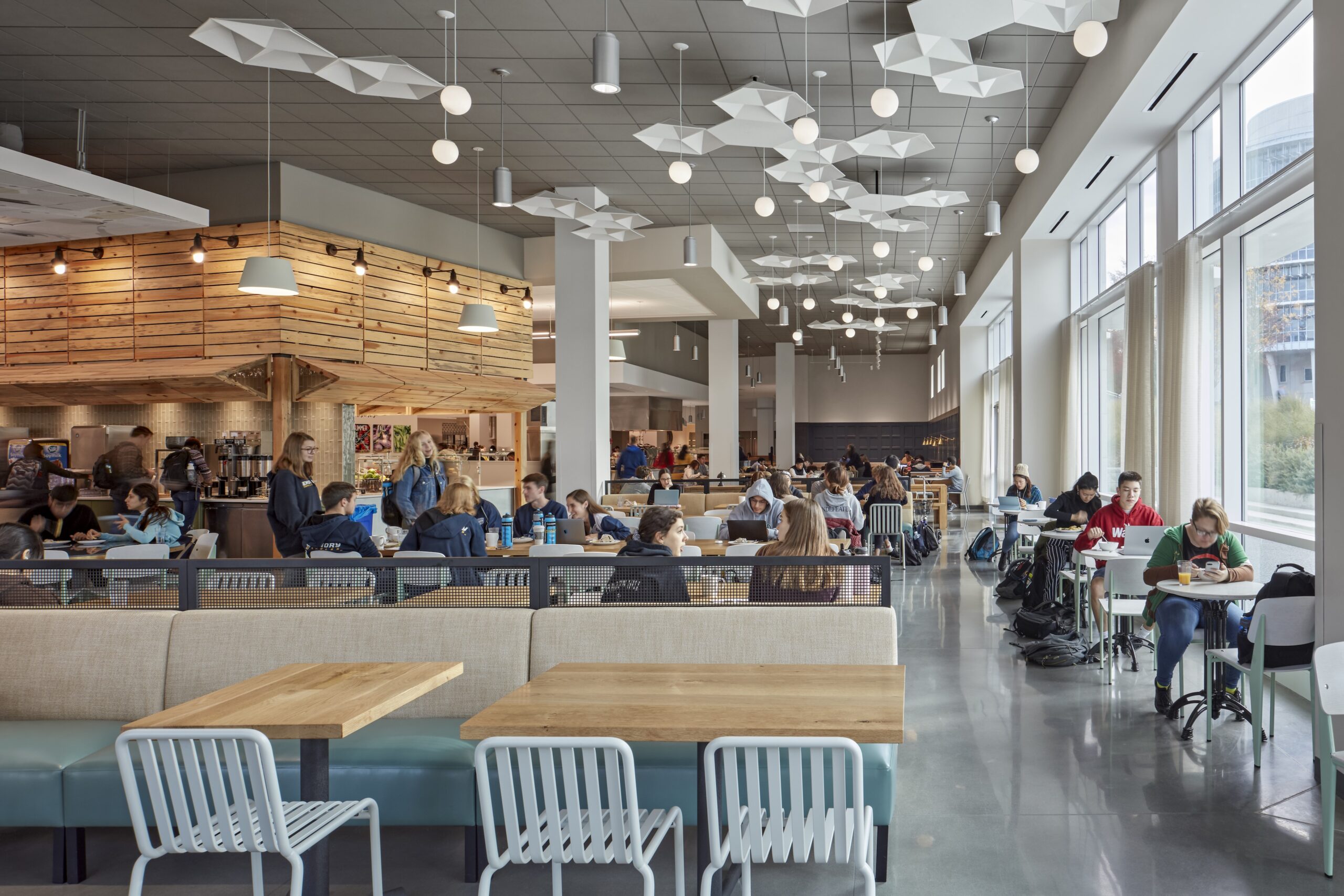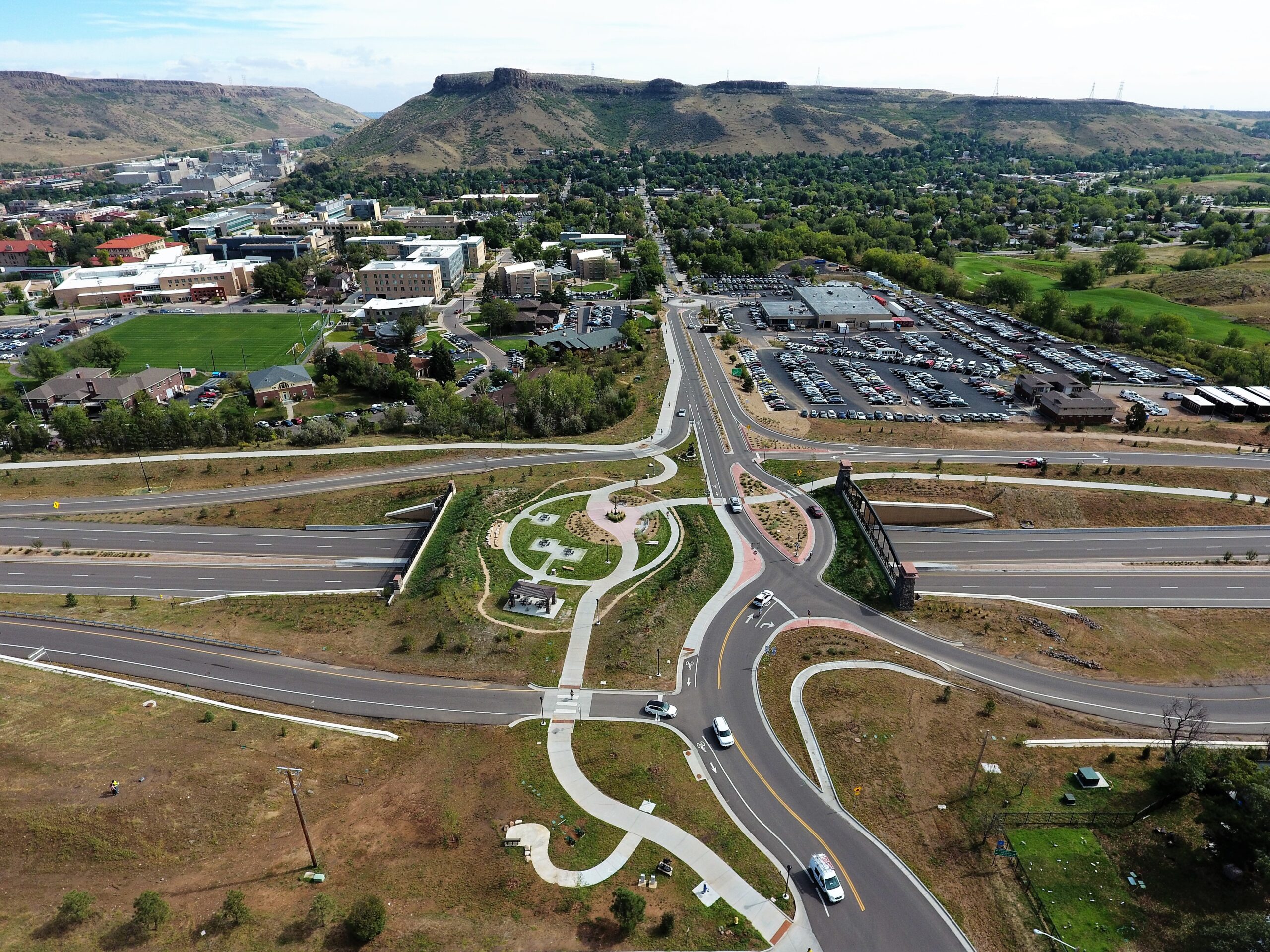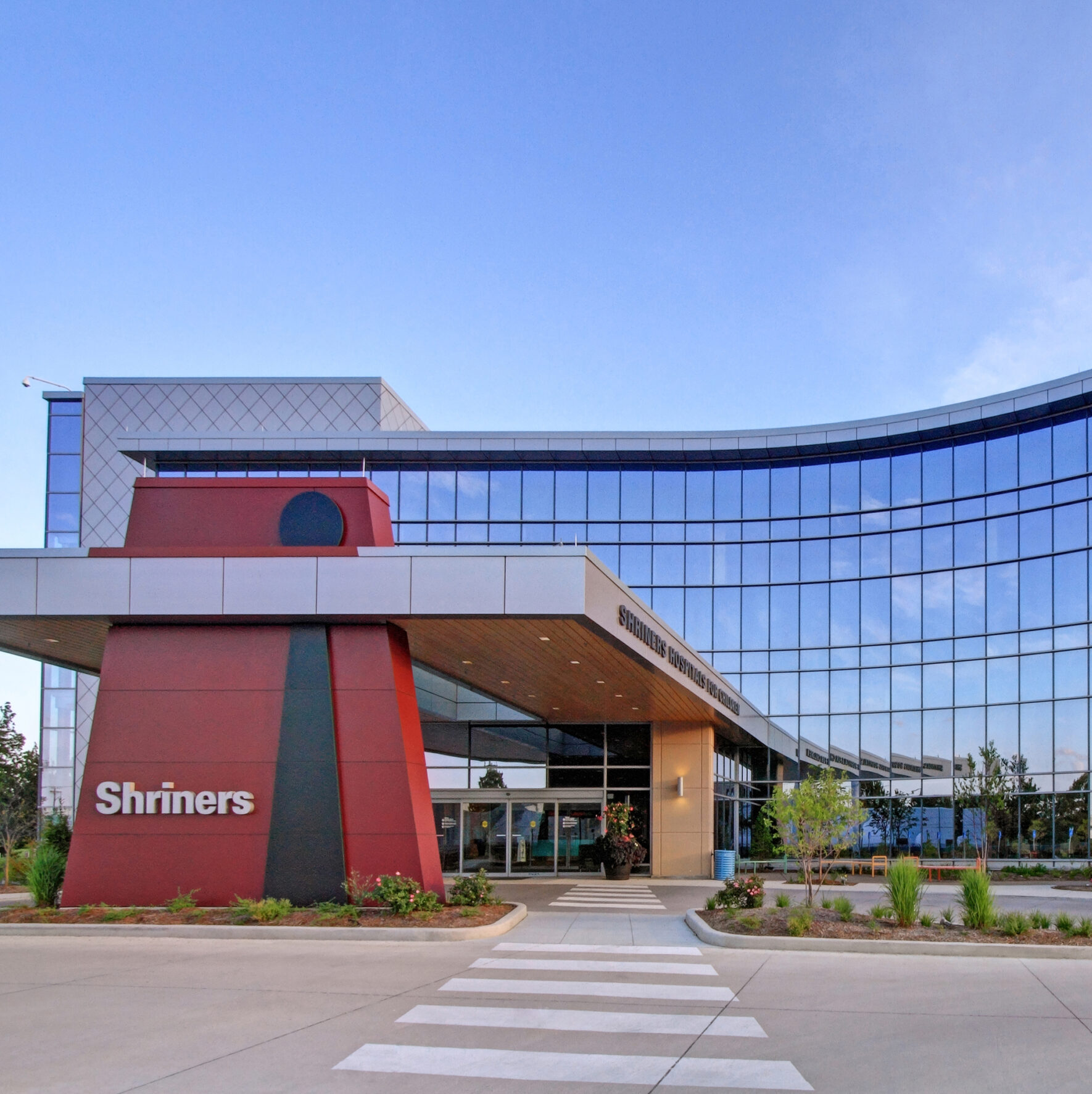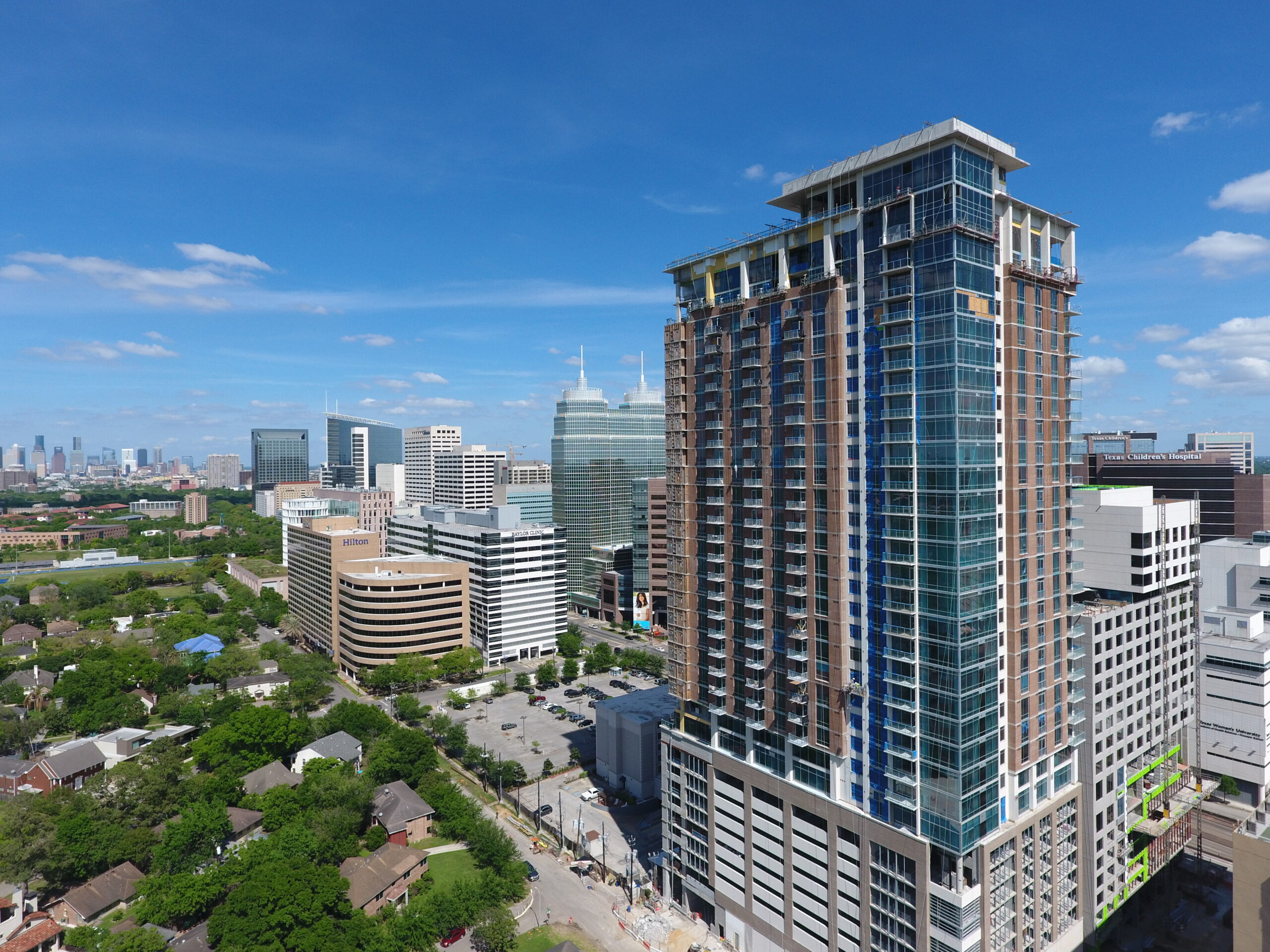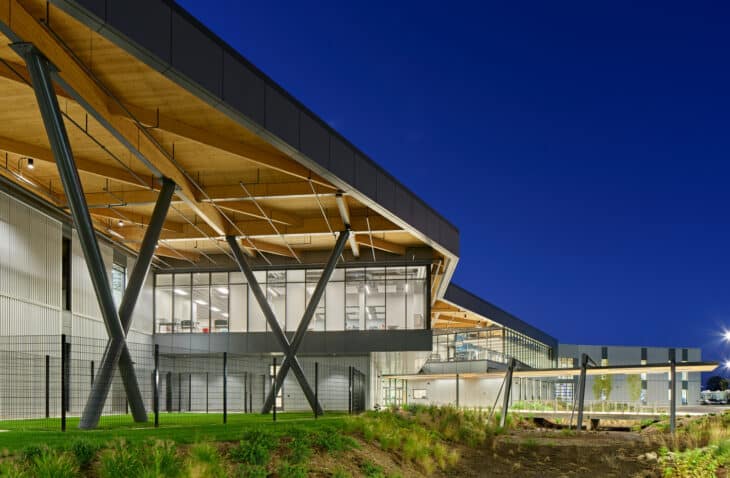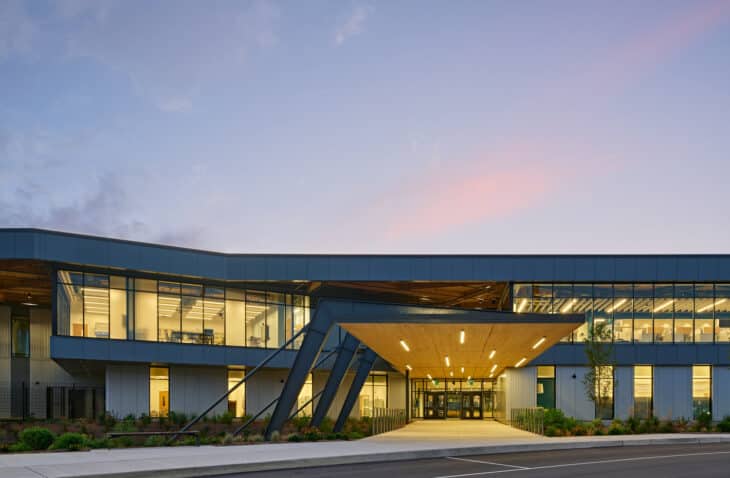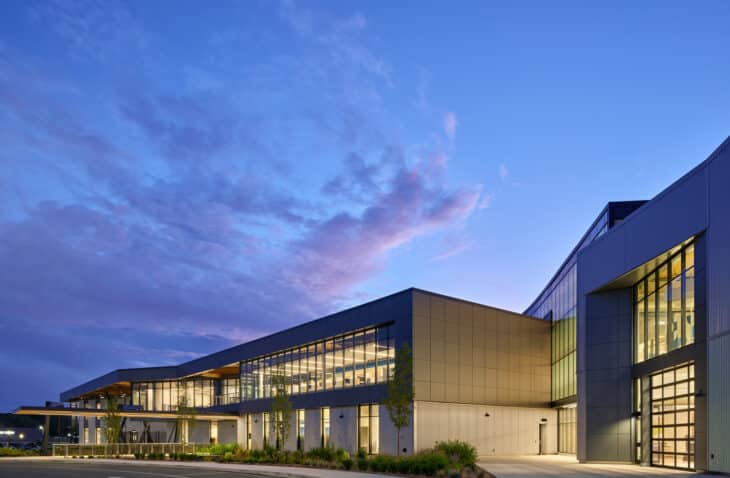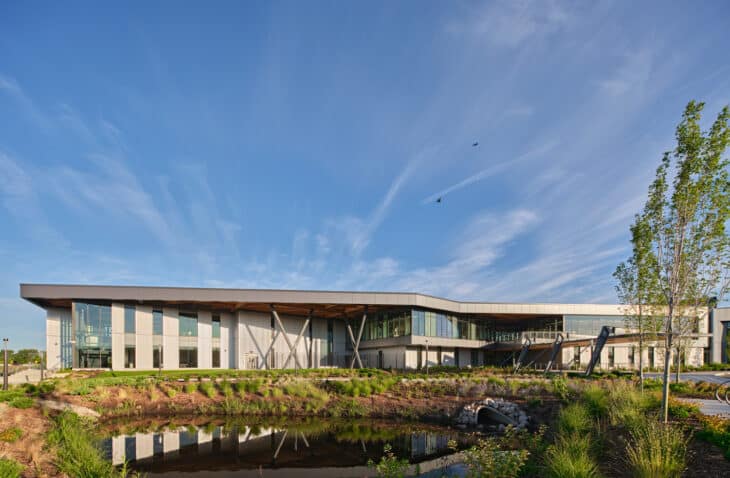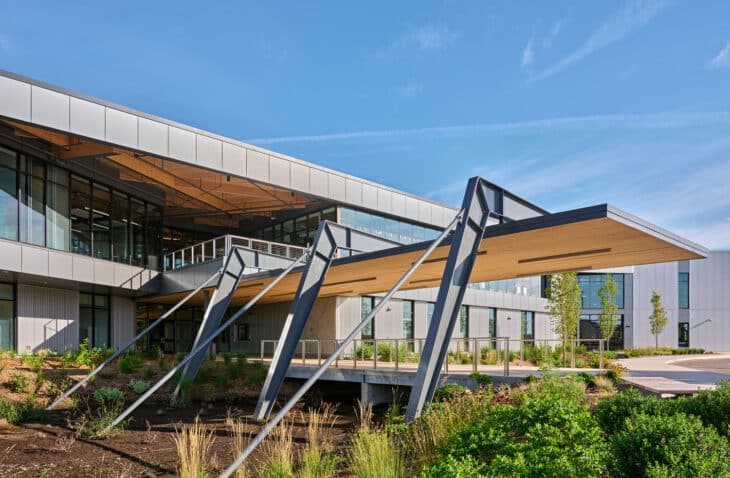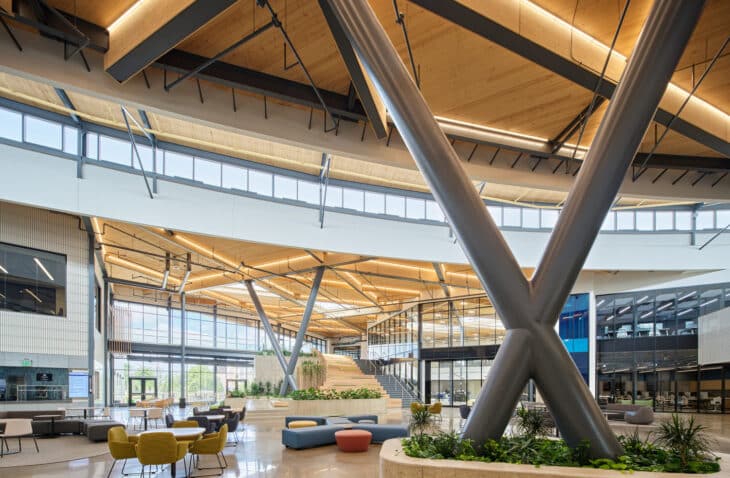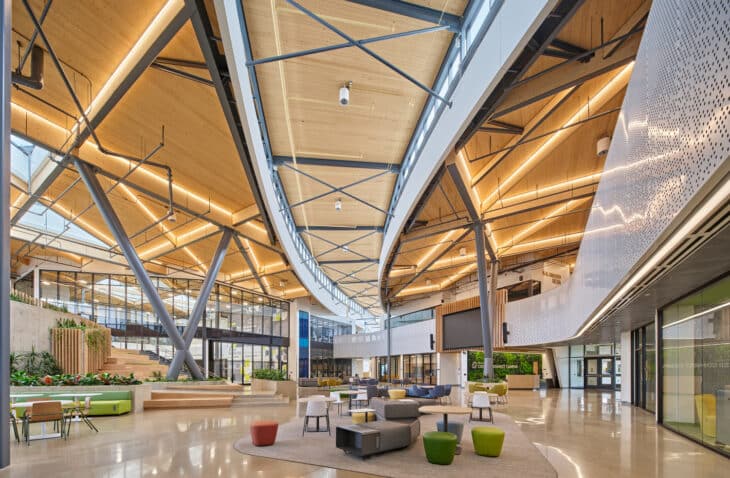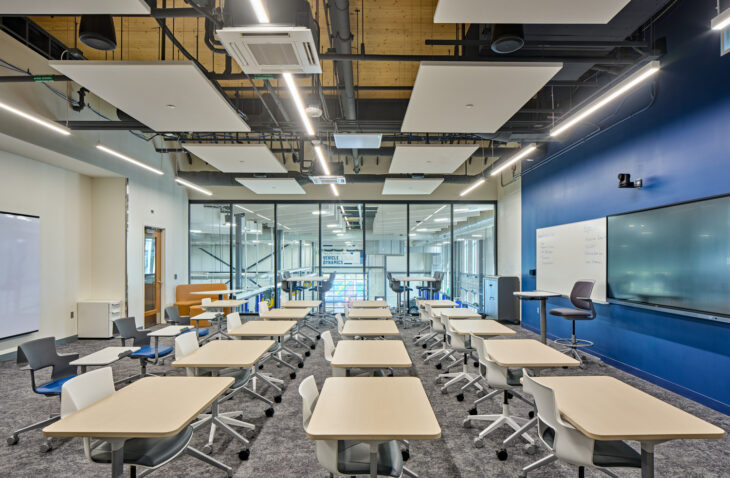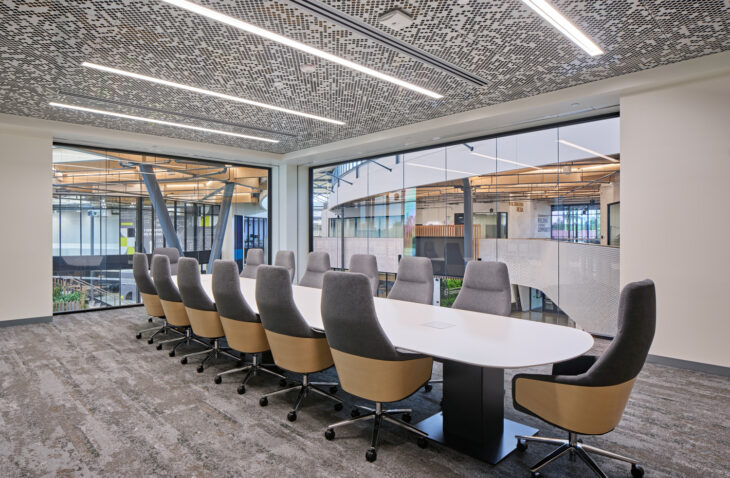Career and Technical Education Center
The project: The Kalamazoo Regional Educational Service Agency (KRESA) built the Career Connect Campus to centralize and elevate its Career and Technical Education (CTE) programming. This 167,000-sf, two-story hybrid mass timber facility will support 1,400 high school students from across Kalamazoo County as they learn more about 23 career pathways. Designed as a dynamic, immersive learning environment, the building includes advanced labs for automotive, culinary, veterinary science, robotics, simulation healthcare, and more.
The goal: The goal of the Career Connect Campus was to create a future-ready, sustainable facility that integrates hands-on learning with modern building systems to prepare students for high-wage, high-demand careers. KRESA and its partners set out to design a sustainable, engaging space that reflects industry standards and inspires curiosity in students—while showcasing the building’s inner workings as part of the educational experience.
Challenge: Sustainability is extremely important to KRESA’s students and faculty. Solution: This facility incorporated a mass timber structural system to reduce embodied carbon and an extremely efficient variable refrigerant system that will reduce energy costs and reduce its operational carbon footprint.
Challenge: Creating a sustainable structural design for a large-scale facility. Solution: To align with sustainability goals and promote wellness, the design team chose a hybrid mass timber structure. The building features exposed cross-laminated timber (CLT) roof panels and glulam beams supported by steel-braced frames and CMU shear walls. Four large round HSS X-columns support the clerestory roof and overhangs. This approach reduced the building’s carbon footprint and created a warm, biophilic environment that supports student focus and well-being.
Challenge: Integrating technology as a learning tool. Solution: Rather than hiding mechanical and IT infrastructure, the team opted to expose many of the building systems as part of the design. Server racks, conduit, and mechanical runs are visible in common areas and labs, giving students firsthand insight into how technology powers modern buildings. These intentional choices support STEM learning and demystify the technical systems students may one day design, maintain, or operate.
Challenge: AV consistency across instructional spaces. Solution: IMEG developed a standardized AV framework for each classroom and meeting area. All rooms share the same core equipment, user interface, and operational workflow, simplifying training and support. Camera feeds can be routed between adjacent areas, when necessary, support remote hybrid learning, and special guest lecturers. Touch-enabled digital screens in the classrooms enhance collaboration and interactivity.
Challenge: As education evolves to meet the demands of a rapidly changing world, schools are becoming hubs of innovation where technology plays a pivotal role. Solution: Designing flexible technology infrastructure for scalability and longevity supporting collaborative, interactive, and personalized learning experiences. Preparing for advancements in technology like AI, and IoT in education.
